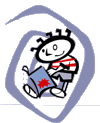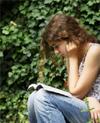 |
 |
 |


|
Chloe doesn't just enjoy fashion; she lives it. Her closet is color-coded, she takes Polaroids of every clothing combination she creates, and she can turn even the plainest t-shirt into a statement with a few stitches and some paint. So she would seem a natural for design school and a future as a big-name designer.
However, in the Wong-Leiberman household, design school is not an acceptable post-high school plan. Chloe will attend an exclusive, rigorous college her parents have approved in order to pursue a respectable career. As her dad likes to say, he doesn't bill four hundred dollars an hour at his law firm in order for his daughter to go to art school. Maybe Chloe should tell her parents someday she hasn't actually gotten around to applying to any of those exclusive schools.
Presented as Chloe's eventual application to the design school of her dreams, the novel introduces the characters and conflicts in small bursts centered around ideas like "a person who has had significant influence over you." This construct could have resulted in a narrative mess, but the author carefully weaves a logical sequence of events through these vignettes.
Chloe is an interesting character as she struggles with her mixed Jewish-Chinese heritage, the ever-widening gap between her and her "perfect" brother, losing touch with her childhood friend, and trying to find a way to be true to herself while keeping peace at home.
The one odd note in her character is the problem she terms her "fashion disorder (FD)." Having FD means experiencing full-blown hallucinations in which ugly clothes and accessories are transformed, and badly-dressed people appear with literal "red flags" pointing out their poor choices. As a side effect, Chloe blurts out fashion advice, sometimes at the most inappropriate moments. The poor impulse control is believable, but the hallucinations are a bit far-fetched.
This leads to another potential negative aspect to the book. Depending on the reader's interest in fashion, clothes, fabrics, and styles are described in detail that is either fascinating or excruciating. As Chloe's own story, the narrative relies a little too heavily on authentic speech, with a few too many "like"s and "for real"s. But as the story plays out, it can be overlooked as the unique voice of a unique character.
|







|
| |
Lorie Witkop/2006 for curled
up with a good kid's book |
|
|
For grown-up fiction, nonfiction and speculative fiction book reviews,
visit our sister site Curled Up With a Good Book (www.curledup.com)
|
|